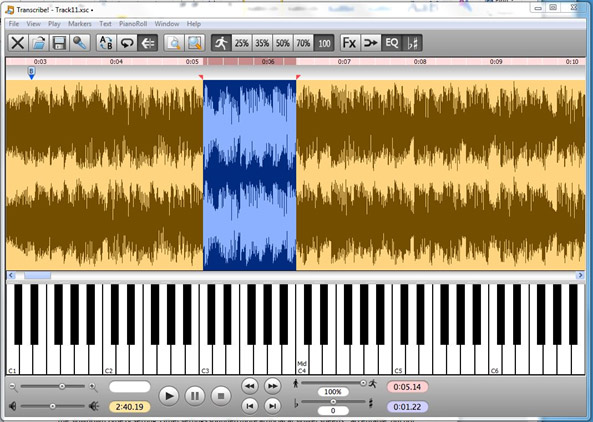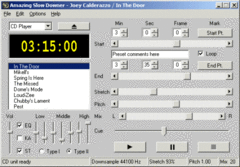

Learning how to play in synch with another musician does, as most others have stated, take a lot of practice. My guess is that you are fairly new to the violin and playing music. Listen to the music and feel the flow - then you can flow with it. I was so impressed that I resolved to learn how to do it - and in time, I did.
#Amazing slow downer cue in full#
The third time around the others tossed it to him he jumped in with both feet and played full bore. The second time through, he picked a note here and there. The first time through he just sat there, concentrating on the rhythm and chord structure. They started playing a piece he had never heard before. I'll never forget a folk festival years ago where I saw Tony McManus, an outstanding Scottish fingerstyle guitarist, sitting in with a couple of other musicians. Once you can tap your toe in time, start adding in a few notes.

Don't play the first time through, but concentrate on picking out the rhythmic landmarks in the piece. That's a starting point you can build on. Consider: if someone is singing "Happy Birthday", can you sing along in time? Even through the fermata before the last line? I bet you can. I do it all the time, and so can anyone with enough practice. Personally I have always found metronomes very good for setting the tempo but very distracting to play with. Fortunately I've had the good fortune to play with three pianists over 40+ years who were excellent in every respect. I've had my share of trying to play with pianists who could not maintain a steady tempo (self-proclaimed "soloists") - but I did not stick with them for long. (Unfortunately the west coast heat predicted for that day was so bad that the concert was cancelled for lack of AC in the venue).) For the 60 years before that I played under rhythms defined by conductors' batons (or hands and fingers) - and that experience seems to do no harm to the development of consistent rhythmic sense!

(Our sight-reading of Mendelssohn's "Italian Symphony" was so 'surprisingly spectacular' a few months back that we unanimously agreed to prepare it for a concert this past Sunday. That it is not like herding cats is due to the ability of each of us to be able to do these things. I think a string player must be able to do these things to play with an accompanist.įor the past 8 years I've been playing in a conductor-less chamber orchestra of about 30 musicians. It is also pretty essential to be able to adapt to fluctuations in tempo. To play in any ensemble whether 2 people or 30, everyone has to be able to maintain a tempo. Andrew Victor Edited: June 11, 2019, 1:33 PM


 0 kommentar(er)
0 kommentar(er)
